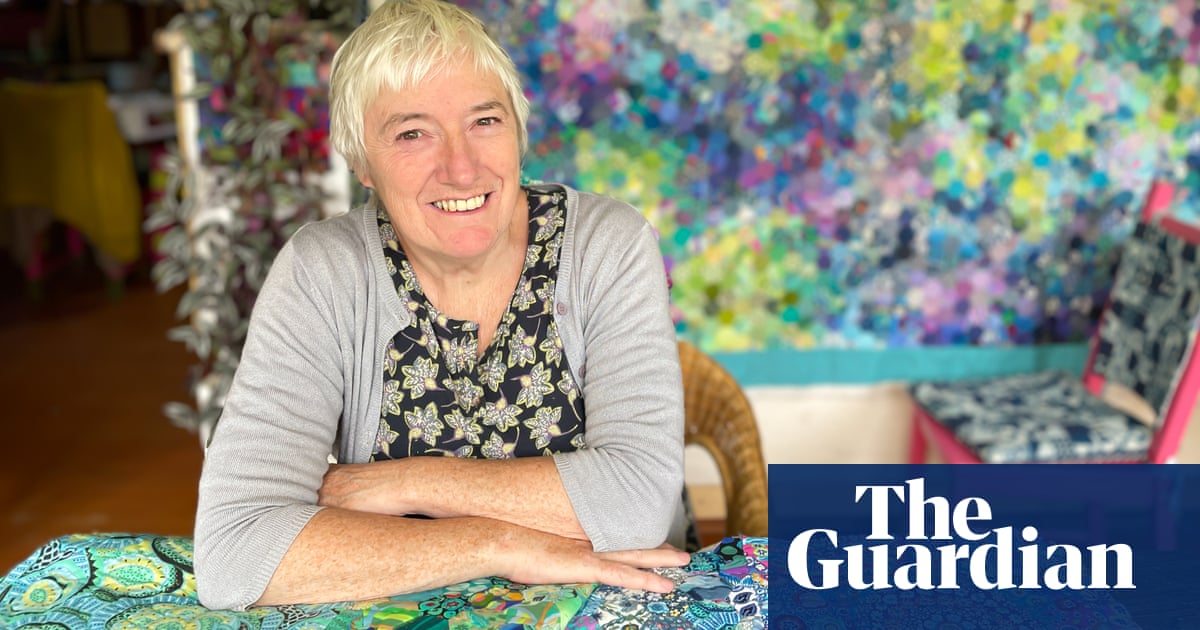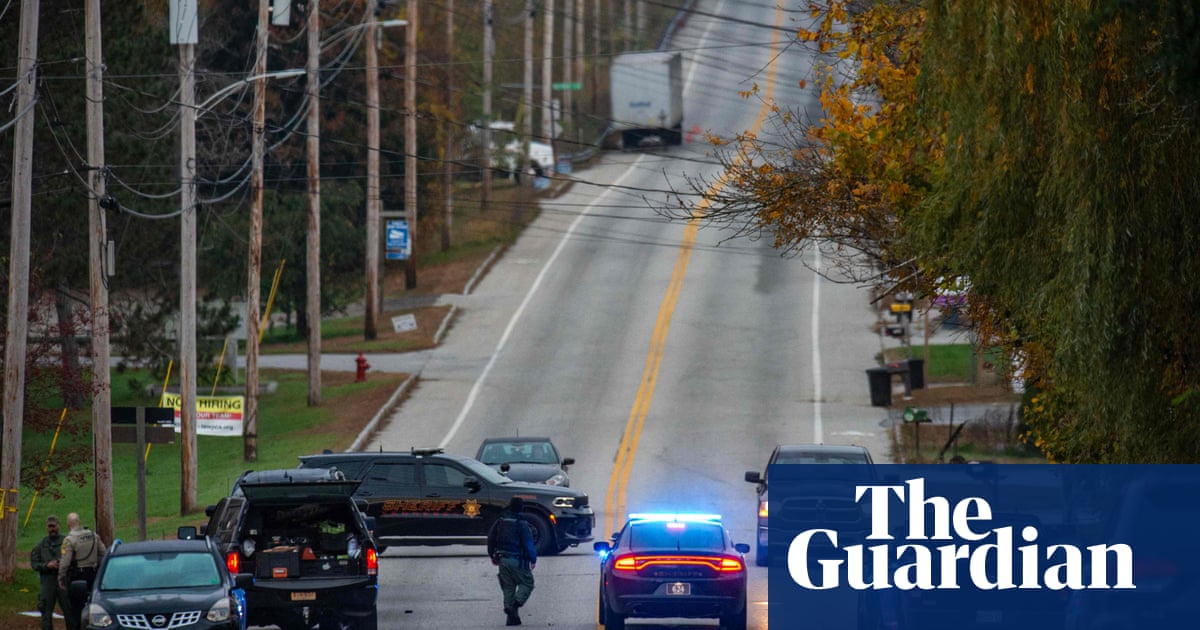
“It’s Finnish winter in complete darkness, and it’s raining ice. And then you can’t sleep, and the baby is screaming, and you’re too tired to get up, but if you don’t get up, there is no one else there.” Anna Härmälä is describing February 2015, when her partner walked out on her and their five-week-old baby. In order to remember, she has to inhabit the “brutal darkness” of that time. “There was extreme tiredness, a deep sadness, moments of despair – but also moments of great love and purpose. That first year was a crazy rollercoaster. It was absolutely… ” She pauses, and breathes in, searching for the right word. What is the word for how it feels when your partner has an affair and abandons you with a newborn? How do you explain it? Härmälä, a Finnish art teacher and children’s book author, started drawing comics.
The comics are raw and funny and painful, thrusting the reader straight into the moment of crisis: Härmälä, ravaged with tiredness, contemplating the droopiness of her breasts and eyebags; intimate conversations with friends; snapshots of the messy loneliness of life stranded with a newborn. The drawings feel so immediate that it’s easy to believe you are reading the story in real time – yeah right, as if a newly single mother, desperately trying to survive, would be likely to sit down each day and create beautiful narrative art about it.
In fact, Härmälä posted her first “single mothering” comic on Instagram in March 2021, six years after the birth and breakup. When we speak, it is summer, and Härmälä, now 39, is at a cabin in Finland, along with her current partner, his three kids, and her daughter Selma, six. “It feels safe to revisit what happened,” she says. “I’m the happiest, and most at ease with everything in my life. For a long time, I couldn’t think about parts of it, or talk about it. Some of it was too painful.”
Härmälä and her ex-partner had been together for seven years. “The relationship was comfortable and safe,” Härmälä says. “But it had problems. The communication wasn’t good. I was getting to the age that if you want to have kids, you have to do it.” So the couple spent two years trying for a baby. “I think I had a feeling there was something wrong with the relationship, but we had built a nest for the baby. The thought of it ending – it just couldn’t happen.”
After the baby was born, her partner “had a major freak out”. She found out he was seeing another woman. “I remember sitting on the bed with the baby, and he was blurting it out, and I didn’t really believe it.”
They briefly tried couples’ counselling, but it was clear things were over. She went into survival mode. “I was like a robot, my body went through the motions. I made sure the baby was dressed, warm, fed – meanwhile my head was somewhere else, in this dark mess. You can’t sleep, you lose track of time, everything around you is just floating.
“But I’m privileged. I’m from the middle class in a Nordic country, where you get free therapy and maternity pay so you can survive. I saw a psychotherapist once a week for a year. She knew exactly what to say, and what I needed.” The routine became an anchor, which kept her from floating completely adrift.
She also had family close by, and friends stepped up. “I started reaching out to other single mums. It’s a community – you’re instantly welcome. I realised this has happened to a lot of people, mostly women.” That fact is reflected in the eager appetite for her comics. “I’ve had comments on social media from people saying that they really need this,” says Härmälä. “I definitely needed something when I was alone with Selma in the first year.” Apart from in the US comedy-drama Gilmore Girls, with its close mother-daughter dynamic, “I didn’t come across lots [of depictions of single mothers] that wasn’t the single-mum victim in a crime show.”
At the darkest points, her tiny daughter became her “compass”. Choices were simplified. “It was easy to think: what is the best thing for her? To put myself aside.” But her own needs were still there? “That was one thing I felt was really unfair,” she says. “When you break up from a long relationship, maybe you want to go partying, or travelling for half a year, you need to find yourself, and feel your feelings. But there was absolutely no space to feel my feelings. So there was lots of crying, and there was lots of walking.”
She didn’t keep diaries, but wandered through Helsinki taking photos of the places where significant things had happened: her therapist’s office; the building where she took Selma for postnatal checks; streets they’d walk down. “After the breakup, there were so many weird things going on – it was like opening the door to a completely new reality. I knew I needed to tell a story about this, but also I needed to survive. So the story has been bubbling inside for six years, and now it’s coming out.”
Despite the time that has elapsed, the comics are packed with incredible detail. In one, Härmälä sits at the table in her dishevelled flat. Her eyes are blue bags of exhaustion, her breast wrung dry from pumping. A stray sanitary pad perches nonchalantly on her head. Through the phone, a well-meaning friend messages: “She is small for such a short time, it’s important that you make the most of it.” The comic sweetly sums up the scourge of unsolicited advice offered to struggling new parents. It also captures the isolation and chaos of new parenthood. I’m amazed by the precision of her memory. Does she use creative licence in retelling the story? “It is the truth as I remember it, as I experienced it,” she says. “It was such a strong, devastating and traumatic experience that if I access these things, they are still fresh.”
She feels the years have been necessary. “If I had done the comics earlier, they wouldn’t have been funny. They would have been mean revenge comics. What’s the saying? Tragedy plus time equals comedy. It’s basically that.”
Was she inspired by other comic memoirs? “I’m not really this comics geek,” she says. “It’s more that comics are just what comes out when I want to tell a story.” In fact, it was rewatching Fleabag that gave Härmälä the voice she had been waiting for. “I was like: OK, now I know how to do this. There was something about the fact that the show can be brutal and funny and painful. I thought: I’ll do that and see what happens.”
What has happened is a series of comics which are laugh-out-loud funny, as well as tender and moving. Some are purely visual – like the four-panel depiction of her ex bursting their cosy newborn bubble with his comically out-of-control erection. They explore Härmälä’s struggle to marry two duelling identities: new mother and newly single. In one, she goes on a disastrous “test date” where the guy starts leering at her enormous, leaking boobs. “That happened,” she laughs. “Afterwards, I realised I had to finish breastfeeding before dating again.”
She started dating properly when her daughter was eight months old. “I enjoyed it,” she says. “I was rediscovering myself. I made a profile which was like: ‘Artsy mum who has a woollen sweater, and is not looking for one-night stands’, and I got to meet all the nice web developer dads in their sweaters. It was good to talk to another adult. That’s what’s missing when you’re alone – you’re just talking to the baby and the wall.”
Many of her comics explore her shifting relationship with her body. In one, her breasts have become mechanical feeding equipment. In another, she laments how “everything is completely reorganised inside… I’m like a virgin again, a virgin mother”. That was something else that seemed “extremely unfair” about being dumped so soon after giving birth: “Your body has completely changed, and yet you can’t go to that familiar person who’s safe. You have to have sex with someone new.”
Although she is still angry about everything she went through, she is determined not to “trash talk” her ex. “He has been a really good co-parent. He’s been making up for it in that sense.” Plus, there is her responsibility towards her daughter. “I don’t want to put anything out there that I wouldn’t feel comfortable showing her or talking to her about.”
Has Selma seen the comics? “She was asking me about the one with the huge eye bags. ‘What’s the blue under your eyes?’ ‘Oh, they’re eye bags, because Mummy was very tired when you were a baby. I was very, very tired, but I was so happy I had you.’” And how about her ex? “I told him I’m going to make a comic book. But now it’s on a bigger scale,” she laughs nervously. “I think he felt that he had messed up so badly, it’s only fair.”
I ask her if she feels vulnerable sharing it so widely. “I don’t mind sharing the difficult, brutal stuff,” she says. “I get more embarrassed showing the loving stuff. Of course there was a lot of joy and love with my daughter. That’s somehow more private – that stuff is mine.”
When Härmälä reflects on what she went through, she has one regret: “I wish I hadn’t felt ashamed,” she says, “but I did. I felt like I had been lowered in the hierarchy of motherhood and parents. Society tells us we need to have a man, and keep the man, and that if the man doesn’t want you, you are unwanted.” In one of her comics, drawn in the style of a medieval tapestry, Härmälä appears as the “single mother witch”, being chased out of the village with pitchforks. It’s the perfect coupling of imagery and text.
Does she still feel ashamed? “Now I feel proud of what I managed to do,” she says. “My daughter is lovely, she’s doing really well. I have a flat, I have work, I do everything myself. I don’t need a man. I can be with someone if I want to, but I don’t have to. And so I’ve gone from standing there alone with a child feeling ashamed – to being proud.”












